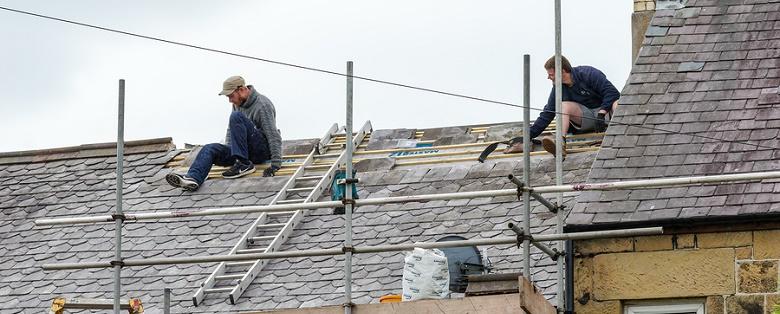
One of the most challenging factors in dealing with flat roofs is detecting leaks and finding their origin. Fortunately, today’s roof services have new tools available to help them find these leaks. By using thermal imaging, roofers can locate the presence of water within the layers of roofing materials non-invasively, then determine the best way to make repairs.
Thermal imaging makes inspection and repairs faster, more precise, and less expensive. This in turn allows contractors to provide efficient and cost-effective service to owners of flat-topped buildings.
What Is Thermal Imaging?
Thermal imaging is the use of an infrared thermal scanner to create images based on the presence of heat in roofing materials. Water takes longer to absorb heat than dry materials and longer to release once it heats up. Based on its ability to read these temperature differences, thermal imaging can be used to detect moisture in different material like decking and roofing insulation. It can also show the depth of the moisture that is present.
How Is Thermal Imaging Used for Inspections?
Flat roofs are designed to be waterproof barriers over buildings such as large commercial units. Since standing and slow draining water is a greater possibility on such roofs, materials must be non-permeable to prevent leaks and serious structural damage. Unfortunately, leaks can occur for a variety of reasons and remain undetected for long periods until the damage is substantial.
Thermal imaging offers roof services an accurate way to inspect buildings for areas of moisture without actually disturbing the surface of the roof. By using heat detection, contractors can scan the entire top of a building looking for problem spots that indicate the presence of moisture under the surface. Once these spots are located, they can then focus on determining the extent of the damage and how it can best be repaired.
Considerations With Thermal Imaging
When performed properly, infrared inspection of roofs offers many important benefits for both contractors and building owners. It allows contractors to get an accurate look at the entire structure faster and more thoroughly than any other method. It also detects water problems without having to disrupt the external material.
It is important this be done by experienced roof services since scans can be affected by various weather conditions and there is some variation as to how different materials show up on the scans. Thermal imaging inspections should be done on a clear, dry, and sunny day to produce the best results. The roofing must be able to absorb heat for the infrared imaging to actually work.
Thermal imaging provides many advantages by allowing roof services to quickly and accurately detect even the smallest problem areas. It is a non-invasive technique that can be used for troubleshooting and routine inspections to ensure there is no unexpected damage. Even though thermal imaging equipment is used mainly on flat commercial roofs, it can also be used to inspect residential pitched installations. It is one of the best diagnostic tools for monitoring roofs and locating water problems before they have a chance to cause serious damage!
